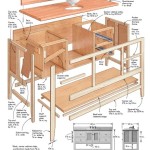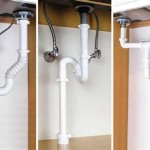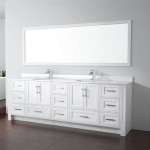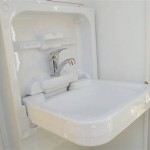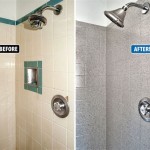How to Wire a Bathroom Fan with Light
Installing a bathroom fan with a light is a common DIY project that can improve ventilation and lighting in your bathroom. This project involves connecting electrical wires to the fan and light fixture, so it is crucial to understand the process and safety precautions before attempting the installation. This comprehensive guide will explain the steps involved in wiring a bathroom fan with a light, providing clear instructions and helpful tips to ensure a successful installation.
Step 1: Gather Necessary Materials and Tools
Before starting the installation, gather all the necessary materials and tools to ensure a smooth and efficient process. This includes:
- Bathroom fan with light: Choose a fan with the desired features and specifications, such as CFM (cubic feet per minute) rating, noise level, and light output.
- Electrical wire: Use appropriate gauge wire for the fan and light fixture's amperage rating.
- Wire connectors (wire nuts): Use wire connectors compatible with the wire gauge and type.
- Junction box: Ensure the junction box is compatible with the fan and light fixture and meets electrical codes.
- Ceiling fan mounting bracket: This bracket will secure the fan to the ceiling.
- Screwdriver: Use a Phillips head screwdriver for the installation.
- Wire stripper: Use a wire stripper to expose the wire ends for connections.
- Voltage tester: A voltage tester helps confirm power is off before working with wires.
- Level: Use a level to ensure the fan is installed straight.
- Safety glasses: Protect your eyes from debris.
- Ladder: Use a sturdy ladder to access the ceiling safely.
Step 2: Turn Off Power to the Circuit
Safety is paramount when working with electricity. Before beginning the installation, locate the circuit breaker controlling the bathroom's power and turn it off. To confirm the power is off, use a voltage tester.
Always double-check that the power is off before touching any wires. Never proceed with the installation if you doubt the power is disconnected.
Step 3: Install the Junction Box
The junction box is the central point for connecting the electrical wires. Install the junction box according to the manufacturer's instructions and ensure it is securely attached to the ceiling joist.
If the existing junction box is not compatible with the fan and light fixture, it may need to be replaced. Consult with an electrician if you are unsure about the junction box's suitability.
Step 4: Connect the Wires
After installing the junction box, connect the wires from the fan, light fixture, and existing wiring. The color of the wires indicates their function:
- Black wire: Hot wire (carries electrical current)
- White wire: Neutral wire (completes the electrical circuit)
- Green or bare copper wire: Ground wire (provides a safe path for electrical current to flow in case of a fault)
Connect the black wires from the fan and light fixture to the black wire from the existing wiring using wire connectors. Similarly, connect the white wires from the fan and light fixture to the white wire from the existing wiring. Finally, connect the green or bare copper wires from the fan, light fixture, and existing wiring together.
Ensure all wire connections are secure and properly insulated with wire connectors.
Step 5: Mount the Fan and Light Fixture
After connecting the wires, mount the fan and light fixture to the ceiling. Use the provided mounting bracket and secure the fan tightly to the ceiling joist. Ensure the fan is level and properly installed before proceeding.
Connect the light bulb to the socket within the light fixture. Make sure the light bulb is compatible with the fixture's wattage rating.
Step 6: Restore Power and Test
Once the fan and light fixture are installed, carefully restore power to the circuit. Turn on the circuit breaker and test the fan and light fixture. Ensure both the fan and light function correctly, and the fan operates quietly and effectively.
If the fan or light does not work or the fan makes unusual noises, carefully inspect the connections and ensure all wires are properly connected.
Installing a bathroom fan with a light is a rewarding DIY project that can enhance your bathroom's functionality and aesthetics. Remember to prioritize safety throughout the installation process and consult with a qualified electrician if you have any doubts or concerns.

Bookingritzcarlton Info Bathroom Fan Light Exhaust

Using Rib Relay Rib2402b To Control Bathroom Fans Lights

How To Make Bathroom Light In Exhaust Fan Wiring Diagram Connection

Exhaust Fan Wiring Diagram Timer Switch

Extractor Fan Wiring Diywiki

Exhaust Fan Wiring Diagram Single Switch

Bathroom Exhaust Fan Light

How To Make Bathroom Light In Exhaust Fan Wiring Diagram With

Understanding Extractor Fan Wiring

Extractor Fan Wiring Diywiki
